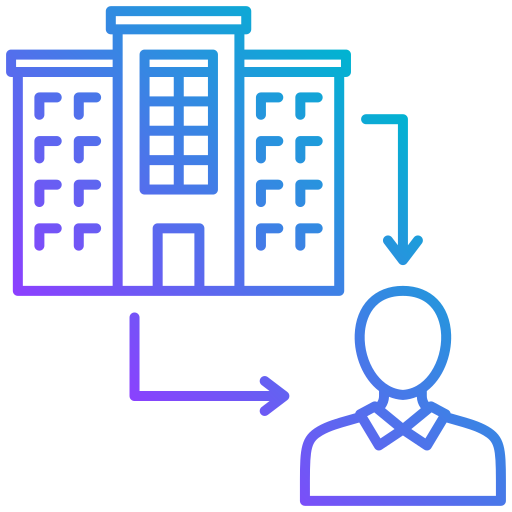Multiple survey modes have proven to be highly effective ways of conducting surveys, hence mixed-mode projects are becoming more commonplace in the research industry. Combining more than one research methodology enables the researchers to obtain more accurate data. This approach leverages the advantages of the different approaches, thus minimizing the main issues that may occur, such as non-response and bias.
In this article, we will try to dive into the core of mixed-mode surveys, particularly B2B mixed-mode surveys, as we have experienced a big increase in the demand and execution of B2B mixed-mode projects.
Understanding Mixed-Mode Surveys
Mixed method market research refers to the use of more than one data collection method to gather information from research participants. It is also referred to as hybrid market research, mixed-mode research, and multimethodology research. A common way of integrating different research modes is online research and CATI, as well as F2F and the old good post-mail research. However, it is not rare to see a combination of qualitative and quantitative research methods as well.
Advantages
Response rates and coverage
CATI, CAWI, CAPI, every single one of these data collection methods has a different response rate, and specific mode effects, and each of them has experienced a decrease in the past decade. Using a mixed-mode approach can help increase response rates by giving the respondents various options for participation. This way, the respondents can choose their preferred channel. While some people don’t have access to the internet or don’t feel confident using a computer, tablet or smartphone, others may prefer the online approach because of the ease of use or because of not feeling comfortable responding to questionnaires on the phone or in person. Therefore, employing several channels and methods of contact can and will result in better coverage.
Bias reduction
Definition: Bias in survey research refers to systematic errors that can skew the results, leading to conclusions that do not accurately reflect the true sentiments or behaviours of the target population. While every research methodology has its biases, by combining them, researchers can offset the biases associated with any single mode. This means that the strengths of one mode can compensate for the weaknesses or biases of another, leading to more reliable and valid data.
Cost-effectiveness
While the cost of a CATI project has been increasing, it persists as one of the most representative methodologies used in research. On the other hand, online research is one of the most cost-effective data collection methods but it may result in coverage bias and certain non-response errors. For that reason, a mixed mode can be the optimal approach to ensure response rate and representativeness while reducing costs. The same situation would be with the F2F method and standard post-mail or CATI.
Limitations
Despite the above-mentioned advantages, we must stress the importance of the issues that mixed-mode research can cause, and it’s related to measurement errors and it’s since different types of data-collection methods result in different types of answers to the same question. The types of questions, the presence or not of an interviewer, and multiple choices available are just some of the factors that can influence the final answer of the respondent.
This being said, we can conclude that the ideal scenario would be to redefine the questionnaire and design the surveys in a way that a mixed-mode data collection can provide comparable results.
Combining methodologies
When it comes to B2B research, the main company phone number has become an obsolete method of conducting interviews. Firstly, it is time-consuming and costly. Secondly, companies have either switched completely or partially to remote work. Obtaining the direct contact of a certain C-level decision maker via email does reduce the time spent needed for calling, as well as the attempts to complete an interview, hence plenty of researchers have turned to utilising direct email addresses to obtain a portion of the responses.
Based on our experience as a sample provider, a combination of a CATI methodology with online surveys, has resulted in major improvements when it comes to B2B survey research projects. Furthermore, a follow-up or prenotification can be done by including different messenger services such as WhatsApp, SMS or even Linkedin.
Emails, WhatsApp, SMS and LinkedIn messages can additionally be used as a recruitment mode for qualitative in-depth interviews or focus groups.

Table 1. Uses of different communication methods with message types in hybrid Business-to-Business Survey Research studies.
B2B Mixed-mode by Sample Solutions
Taking in consideration that we have been working as a sample provider for about 2 decades now, it was more than expected to take a step further and try exploring new options to keep up with the pace of the evolving industry. On average, we sample about 250 B2B projects yearly, which gives us enough confidence and experience to be able to identify the weak points and the strengths of our own datasets, as well as to identify the main pain points our clients have while conducting a B2B survey. Therefore, our scope was to find a solution that would make B2B projects smoother and ever-difficult targets reachable.
Our method
With the change of data collection towards hybrid, it becomes paramount to implement data collection modes that fetch potential survey respondents at their preferred space. This could be online or offline, mobile or landline, LinkedIn or WhatsApp.
At Sample Solutions we provide B2B digital recruitment from 6 different channels and the option to invite respondents to a full survey, to a pre-interview, to a landing page or a calendar booking page. Most of the time, we used Digital Recruitment as a complementary part of a Mixed-mode project, combining it with push-to-appointment or push-to-CAVI interviews.
The way that our clients can benefit from Digital recruitment is by getting a list of strongly interested people that can be on later stage contacted and interviewed via CATI or recruited for a Focus group or an In-depth survey, minimising this way the costs for a typical CATI project or the low response rate of a good old CAWI.
Conclusion
The integration of multiple survey modes in B2B research has proven to be an effective strategy for overcoming common challenges such as non-response and bias. By leveraging the strengths of various data collection methods, researchers can achieve higher response rates, reduce biases, and maintain cost-effectiveness as well as reduce fieldwork times. However, it is essential to design surveys carefully to ensure comparability across different modes.
As the research industry continues to evolve, adopting mixed-mode approaches will become increasingly important for obtaining accurate and reliable data. At Sample Solutions, we are committed to staying at the forefront of these advancements by continuously refining our methodologies and exploring new opportunities to enhance B2B survey research.






